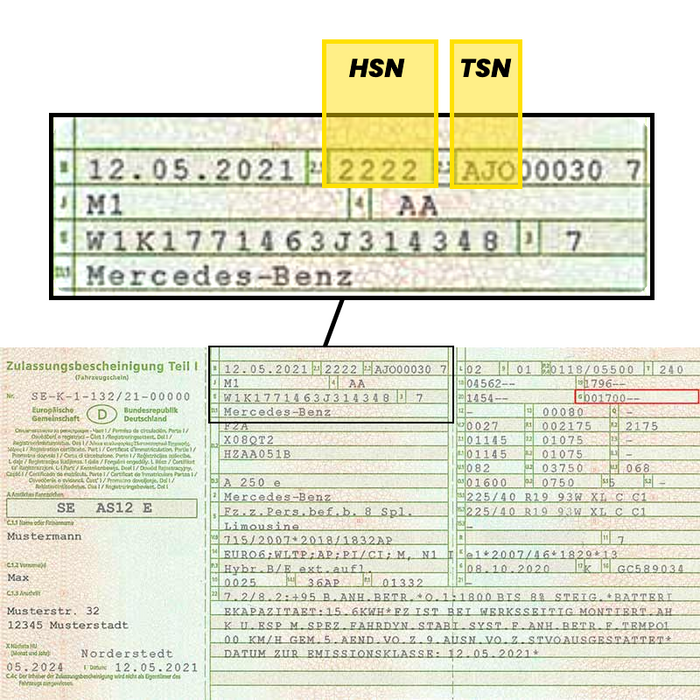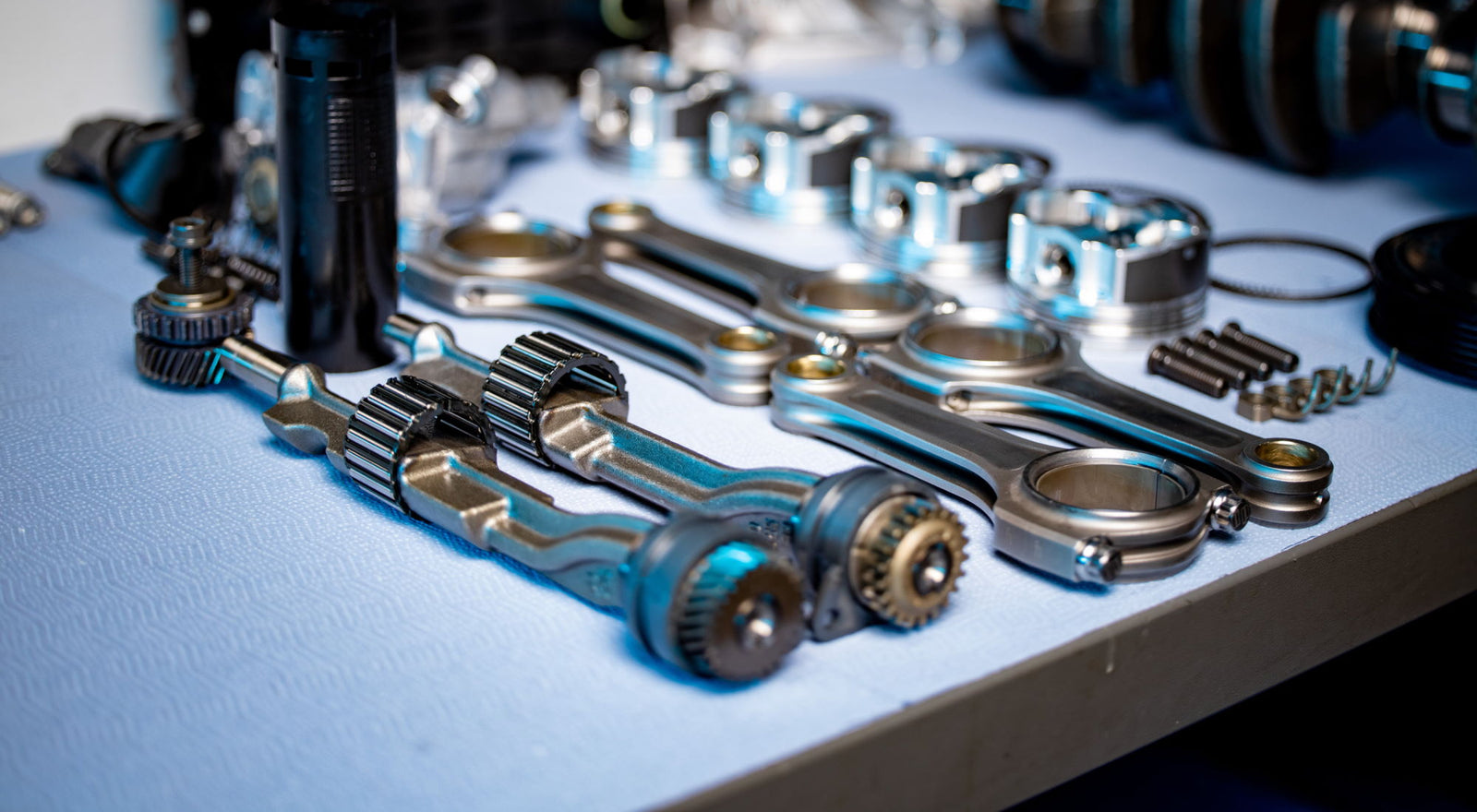Motor oil lab - analysis - Do the check now & check the condition of your oil! Oil check oil test check-up
Shipping Rates
Germany
| Rates | Amount |
| Express 0.5kg-5kg (1-2 working days) | |
| Express 5.1kg-10kg (1-2 working days) | |
| Express 10.1kg-20kg (1-2 working days) | |
| Express 20.1kg-30kg (1-2 working days) | |
| Express 30.1kg-50kg (1-2 working days) | |
| Express 50.1kg-89.9kg (1-2 working days) | |
| No shipping costs 0.01kg-0.49kg | |
| Standard 0.5kg-5kg (2-4 working days) | |
| Standard 5.1kg-10kg (2-4 working days) | |
| Standard 10.1kg-30kg (2-4 working days) | |
| Standard 30.1-50kg (2-4 working days) | |
| Standard 50.1kg-89.9kg (2-4 working days) | |
| Freight forwarding 90kg-150kg, incl. Collection of old parts | |
| Freight forwarding 150.1kg-300kg | |
| Freight forwarding 150.1kg-300kg, incl. Collection of old parts | |
| Freight forwarding 300.1kg-1000kg | |
| Freight forwarding included. Used parts collection, 300.1kg-1000kg | |
| Shipping costs 1000.1kg-2000kg | |
| Shipping costs 1000.1kg-2000kg, incl. Collection of old parts |
Europe (Zone 1)
| Rates | Amount |
| Standard 0kg-5kg | |
| Standard 5.1kg-10kg | |
| Standard 10.1kg-20kg | |
| Standard 20.1kg-30kg | |
| Standard 30kg-50kg | |
| Standard 50.1kg-90kg | |
| Shipping Service 90.1kg-150kg, incl. old part collection | |
| Shipping Service 150.1kg-300kg, incl. old part collection | |
| Shipping Service 300.1kg-1000kg, incl. old part collection | |
| Shipping Service 1000.01-2000kg, incl. old part collection |
Europe (Zone 2)
| Rates | Amount |
| Standard 0kg-5kg | |
| Standard 5.1kg-10kg | |
| Standard 10.1kg-20kg | |
| Standard 20.1kg-40kg | |
| Standard 40.1kg-60kg | |
| Standard 60.1kg-90kg | |
| Shipping Service 90.1kg-150kg | |
| Shipping Service 150.1kg-300kg | |
| Shipping Service 300.1kg-1000kg, incl. old part collection | |
| Shipping Service 1000.1kg-2000kg, incl. old part collection |
International
| Rates | Amount |
| Standard 0kg-5kg | |
| Standard 5.1kg-10kg | |
| Standard 10.1kg-20kg | |
| Standard 20.1kg-30kg | |
| Standard 30.1kg-60kg | |
| Standard 60.1kg-90kg | |
| Shipping Service 90.1kg-150kg, incl. old part collection | |
| Shipping Service 150.1kg-200kg, incl. old part collection | |
| Shipping Service 200.1kg-300kg, incl. old part collection | |
| Shipping Service 300.1kg-1000kg, incl. old part collection | |
| Shipping Service 1000.1kg-2000kg, incl. old part collection |
Motor oil lab - analysis - Do the check now & check the condition of your oil! Oil check oil test check-up is backordered and will ship as soon as it is back in stock.
The item will be available again soon.
Be one of the first to get this product as soon as it is available again!
✔ Drastically increased longevity
✔ Effective vulnerability management
✔ Focus on optimal performance & a great driving experience
✔ 150% better than the original!
Delivery and payment
Delivery and payment
The following conditions apply:
The goods are delivered worldwide.
Shipping costs (including VAT)
Domestic deliveries (Germany):
We charge a flat shipping fee of €9.50 per order.
When sending bulky goods (freight forwarding), we charge as follows:
90,00€
Bulky goods are marked as such in the item description.
Deliveries abroad :
We calculate the shipping costs abroad as follows:
25,00€
When sending bulky goods (freight forwarding) abroad, we charge as follows:
300,00€ Europe-wide
600,00€ Worldwide
Bulky goods are marked as such in the item description.
Delivery times
Unless a different deadline is specified in the respective offer, the goods will be delivered domestically (Germany) within 5 - 7 days, and for international deliveries within 7 - 10 days after conclusion of the contract (if advance payment has been agreed, after the time of your payment instruction).
Please note that no deliveries are made on Sundays and public holidays.
If you have ordered items with different delivery times, we will send the goods in one shipment unless we have made different arrangements with you. In this case, the delivery time is determined by the item you ordered with the longest delivery time.
If you pick up the goods yourself, we will inform you by email about the availability of the goods and the collection options. In this case, no shipping costs will be charged.
Accepted payment options
- Cash on pickup
- Prepayment by bank transfer
- Payment by SEPA direct debit
- Payment by SEPA direct debit
- Payment via PayPal
Further details on payment
When paying by SEPA direct debit or SEPA business direct debit, you authorize us to collect the invoice amount from the specified account by issuing a corresponding SEPA mandate. You will receive a pre-notification at least 5 days before the date of the direct debit. Please note that you are obliged to ensure that there are sufficient funds in the account on the announced date.
Our bank details:
Volksbank Bielefeld Gütersloh
IBAN: DE88 4786 0125 1509 8864 00
BIC: VBGTDE3MXXX
If you have any questions, you will find our contact details in the imprint.
Do you own a vehicle whose engine condition is unknown?
You are about to purchase a vehicle and want to gain insight into the mileage / engine condition to avoid making a bad purchase?
Our motor oil analysis allows you to detect an impending Early detection of engine damage and to avoid expensive repairs.
The engine oil sample is examined in the laboratory and the result is analyzed, evaluated, and provided by us.
The engine oil check verifies:
- Particle count in the oil
- Chemical composition of particles & additives
- ICP Analysis
- TBN / TAN Examination
- Viscosity of the oil at different temperatures
- Condensate or coolant (glycol) in the engine oil
- Fuel in engine oil
- The properties and performance of the additives
The process is quite simple:
- Take an engine oil sample
- Fill the oil sample into the supplied sample jar
- Send the oil sample back to us
- You will receive an evaluation & assessment from the expert as a PDF
Why an oil analysis at all?
The answer is simple: Prevention is better than repair. Engines are the heart of our economy and are designed to operate efficiently. Oil plays a crucial role by ensuring lubrication and thus maintaining functionality.
However, oil is subject to natural wear, which can negatively affect the function and lifetime of a machine. The oil change intervals recommended by the manufacturer are general and do not take into account the actual operating conditions. A professional analysis allows for a precise diagnosis of the current condition of a machine.
In our analyses, the oil is checked for specific substances. Based on the amount of particles present, valuable conclusions can be drawn about whether, for example, there is increased friction between certain components, whether lines are outdated, or whether the oil is impaired due to long-term use, contamination, heating, etc.
Based on these results, oil change intervals can be optimized, maintenance on specific components can be performed, failures can be prevented, the lifetime can be increased, and the economic efficiency of a machine can be improved.
What we investigate:
The ICP analysis (Inductively Coupled Plasma) provides information about metal wear (abrasion), additives, and other contaminants in the oil. Changes in the additive elements can, in combination with other tests, provide insights into the condition of the used oil. This includes the breakdown of additives, mixing, or even incorrect fillings.
The Fourier Transform Infrared Spectroscopy (FT-IR) allows conclusions to be drawn about the condition of the oil. By comparing with a known fresh oil spectrum, changes in the spectrum can be detected that indicate mixtures, the ingress of water or glycol, the degradation of additives, the soot content, as well as the values for oxidation and nitration levels. Therefore, it is important to always provide us with the full name of the fresh oil (manufacturer and exact product designation), if known!
The viscosity The viscosity of oils varies depending on temperature. As the temperature increases, the viscosity decreases, which means that the oil becomes thinner. However, this temperature dependence is not the same for different types of oils. In high-quality products, this influence is less, meaning that the viscosity of the oil decreases less significantly with rising temperatures compared to cheaper products. To establish comparability, the viscosity index (VI) has been introduced. This value is derived from the viscosity of the oil at 40 °C and 100 °C. A high VI indicates a lower temperature dependence. During operation, the VI should not change, as the normal aging of the oil (oxidation) affects the viscosity evenly across all temperature ranges. However, due to special additives to improve the viscosity index (VI improvers), shear can occur, which can lead to a drop in the VI. An increase, on the other hand, indicates that mixing has occurred when topping up the oil.

The team behind - Mik Motoren
150% better than the original!
We are a dynamic team of experienced automotive experts and enthusiastic car lovers who have made it their mission to get the best possible performance and durability out of every vehicle and thus ensure a fantastic driving experience for our customers.









